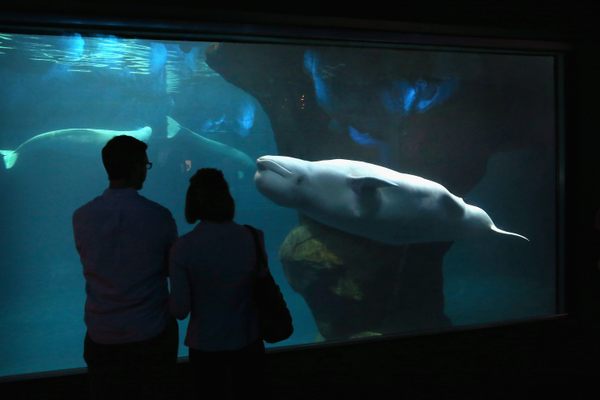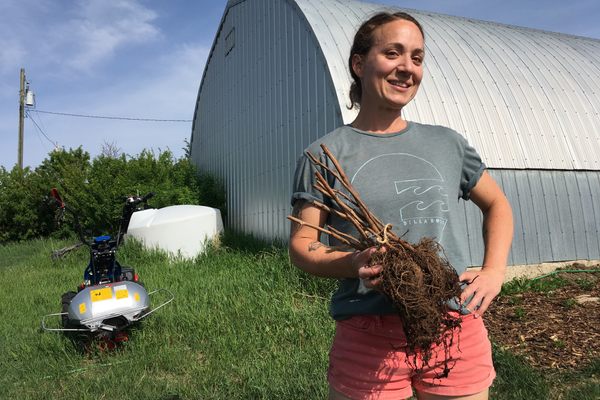Nature in the City: Jamaica Bay Wildlife Refuge
That wetland you fly over when landing at JFK Airport in New York City is in fact Jamaica Bay Wildlife Refuge. The only national recreation center in the United States you can reach by subway, it is a sanctuary for birds and New Yorkers alike. A little bit of heaven at the end of the A line, nowhere else in the city does the scenery transition so fast from concrete jungle to offshore marshes, or turn the Manhattan skyline into a backdrop.
Over 60 species of butterflies and 330 species of bird (that’s nearly half the known species in the Northeast) have been spotted here, including migrating raptors (ospreys! hawks!), barn owls, waterbirds, and warblers. Assisted by 15 manmade nesting platforms, the constantly changing bird life has the bay populated by a tern nursery in late summer, and a chaos of ducks in the winter.
Jamaica Bay is also home to Cole the Osprey, a three and a half pound bird equipped with a one ounce backpack containing a solar-powered GPS device which allows researchers to track her migration around the world, at one point traveling over 2,600 miles from the tip of Colombia back to Queens in 15 days. Cole’s nest is three feet tall and weighs over 100 pounds, and was practically untouched by Hurricane Sandy, which majorly hit the area.
The view from Broad Channel
As New York City’s largest open space, there are five miles of trails and 20 miles of bird sanctuary (that’s only 4% smaller than all Manhattan island). One of the few places within city limits where overnight camping is legal, this sanctuary is located along Cross Bay Channel and Howard Beach, bounded by the Rockaways and the airport — low flying planes are a constant reminder that you still haven’t left New York.
1 of 15 manmade nesting platforms
Originally Canarsie Indian land, the American Indians that called it home based their economy on the bay’s plentiful fishing and hunting. In 1624, the area became part of the province of New Netherlands, administered by the Dutch West India Company. In 1905, a plan emerged to turn Jamaica Bay into the world’s largest deep-water port — half a century later, Robert Moses put an end to this plan. In 1953, the Parks Department established Jamaica Bay Wildlife Refuge, and Herbert Johnson was assigned by Robert Moses as parks horticulturist to turn 12,000 acres into a nature sanctuary, and save it from becoming a dumping ground.
A crew of workers transplanted over 1.5 million individual clumps of beach grass to the newly dredged plot, and Moses went so far as to commission the creation of two large fresh water ponds, one of which, West Pond, is still a major feature of the park today. Then, on March 1, 1962, American Airlines Flight 1 crashed into Pumpkin Patch Channel, a remote part of the refuge. 95 people were killed, including a prominent oilman on his way to a fishing trip with former president Dwight D. Eisenhower, a movie producer, a college president, and the head of a luxury hotel chain. There were no survivors. The jetliner plunged nose first into the bay, disintegrating in an explosion of flames. Searchers combed the cold waters for a full day, but were only able to recover 49 bodies. It was the nation’s worst single-aircraft disaster to date. In the Spokesman Review of March 1962, Jamaica Bay was described as: “So primitive that it serves as a wild life sanctuary.” In 1972, ownership was transferred to the National Park Service and the site became part of Gateway National Recreation Area, a part of which it remains.
But as lovely as this little slice of nature is for New York, we are slowly destroying it. Beginning with the development of lower Queens and Brooklyn in the 19th century, today the Bay is the most nitrogen-polluted body of water in the world, and at the beginning of the 20th century, such contaminating businesses as an asphalt factory, lead-smelting operations, and facilities turning dead horses into glue were located on islands on the northern portion of the bay.
For nearly a decade now, the local Hindu population has been using the Bay as a Ganges-substitute, making offerings of coconuts, limes, cremation ashes, statues, and milk covered with turmeric into the waters, unintentionally harming the enclosed habitat which, unlike the Ganges, does not sweep away refuse. Then, last October, Hurricane Sandy pummeled the park, the storm surge carving a new inlet from the bay to one pond and breaching the other in three places, inundating both with salt water, and washing away three subway tracks from the East Pond.
Jamaica Bay Wildlife Refuge is an anomaly, a secret, a sanctuary. And, perhaps my favorite spot in the whole city is past the underbrush at the end of one trail, where two rail tracks lead out deep into the ocean. They’re nearly hidden in high tide or in fog, but on a clear day they look like they may reach to the center of the Earth. None of the refuge workers had any idea what they were from. They’re a little concrete mystery in New York’s least known refuge.
The local Hindu population uses the Bay for ceremonies
Refuse from a ceremony
Trail closed indefinitely by new inlet caused by Hurricane Sandy
Learn more about Jamaica Bay Wildlife Refuge on New York Harbor Parks.



















Follow us on Twitter to get the latest on the world's hidden wonders.
Like us on Facebook to get the latest on the world's hidden wonders.
Follow us on Twitter Like us on Facebook